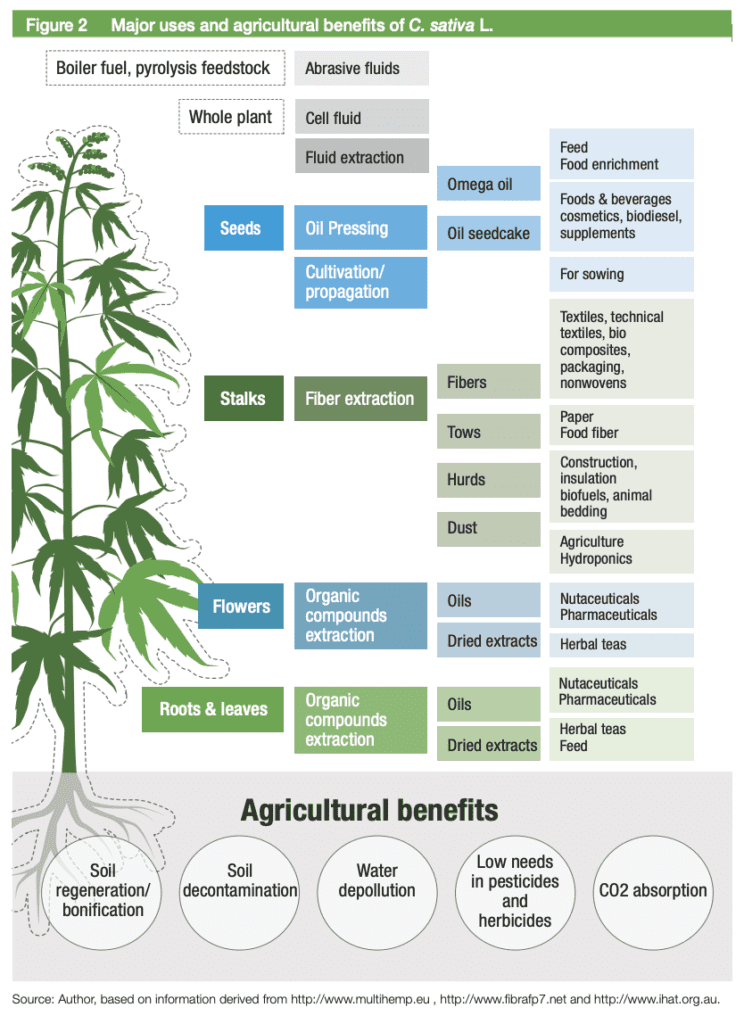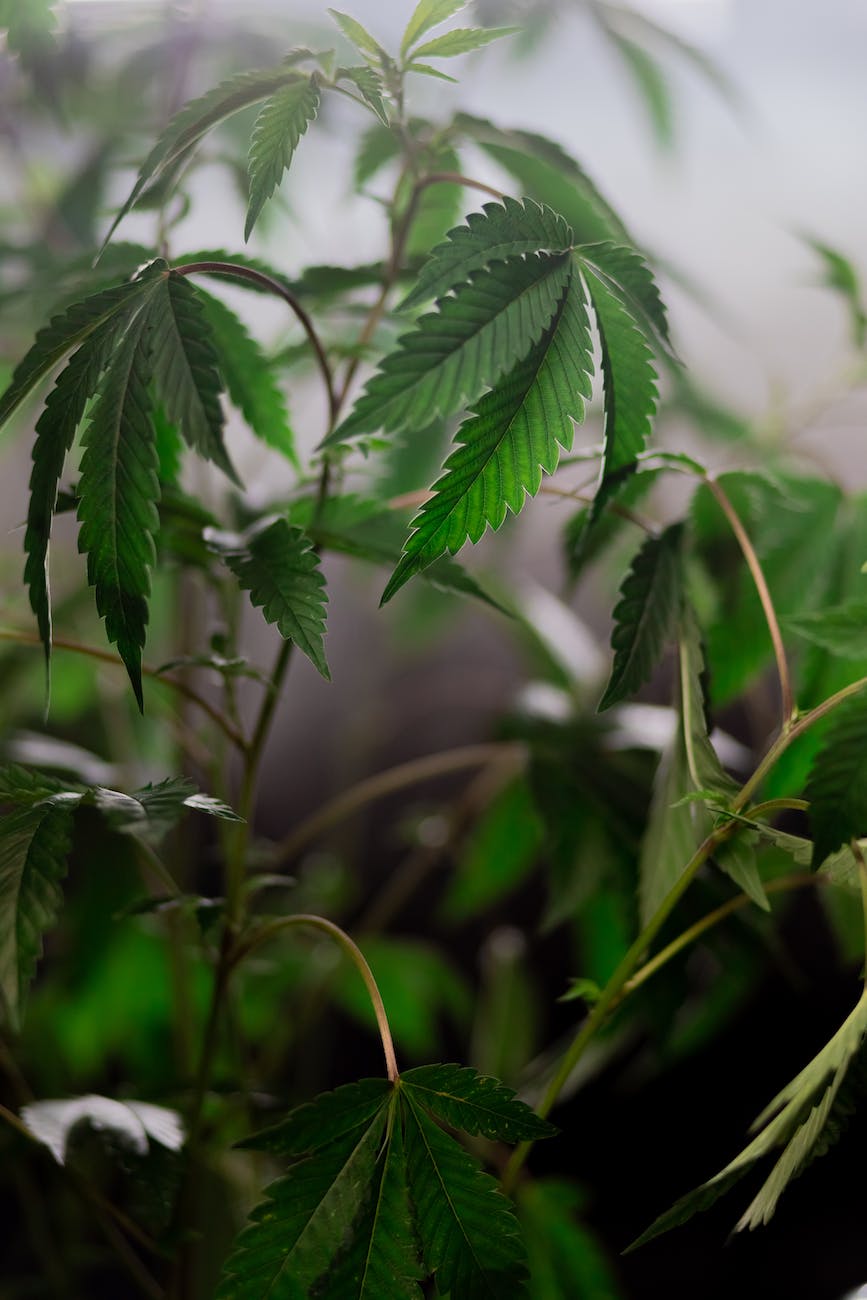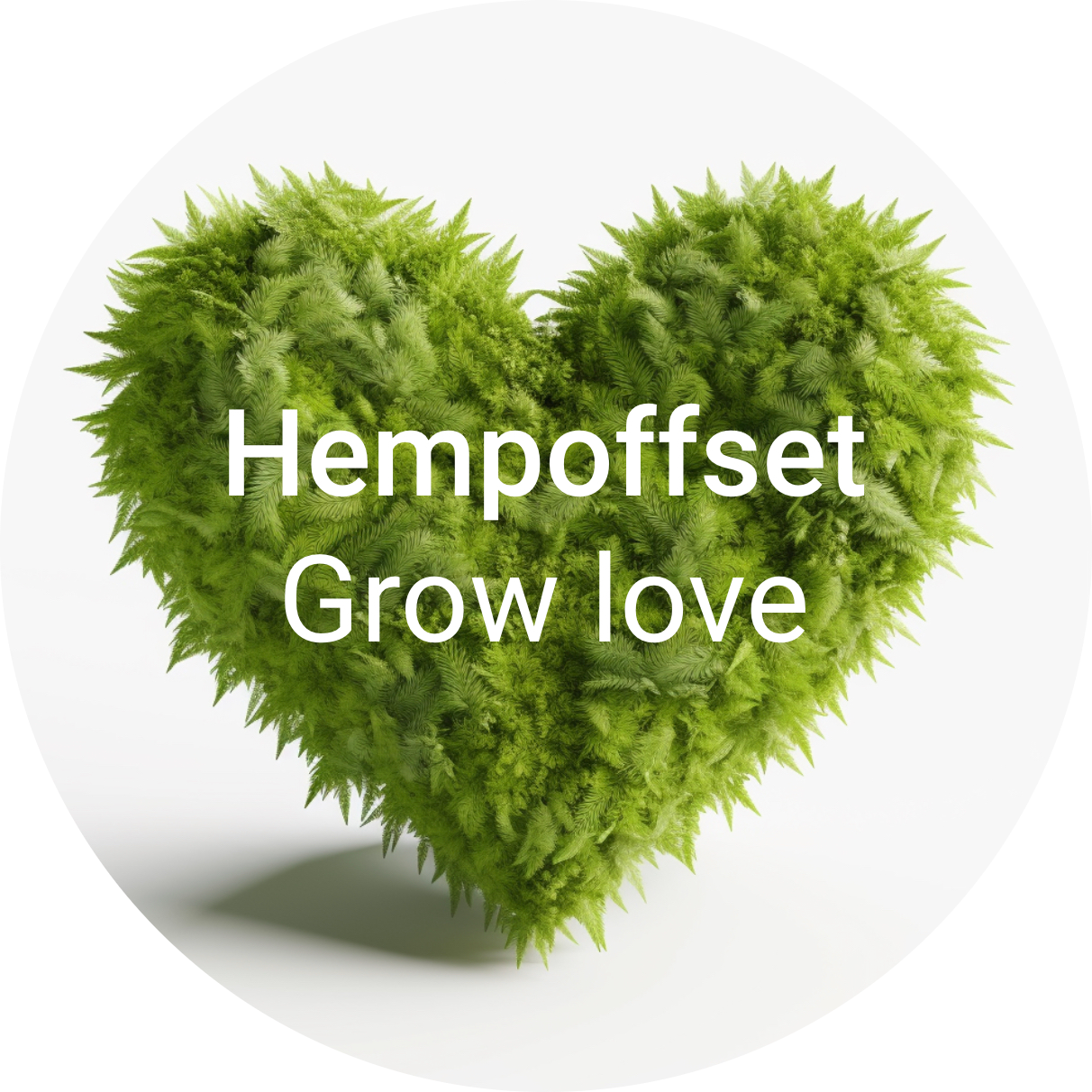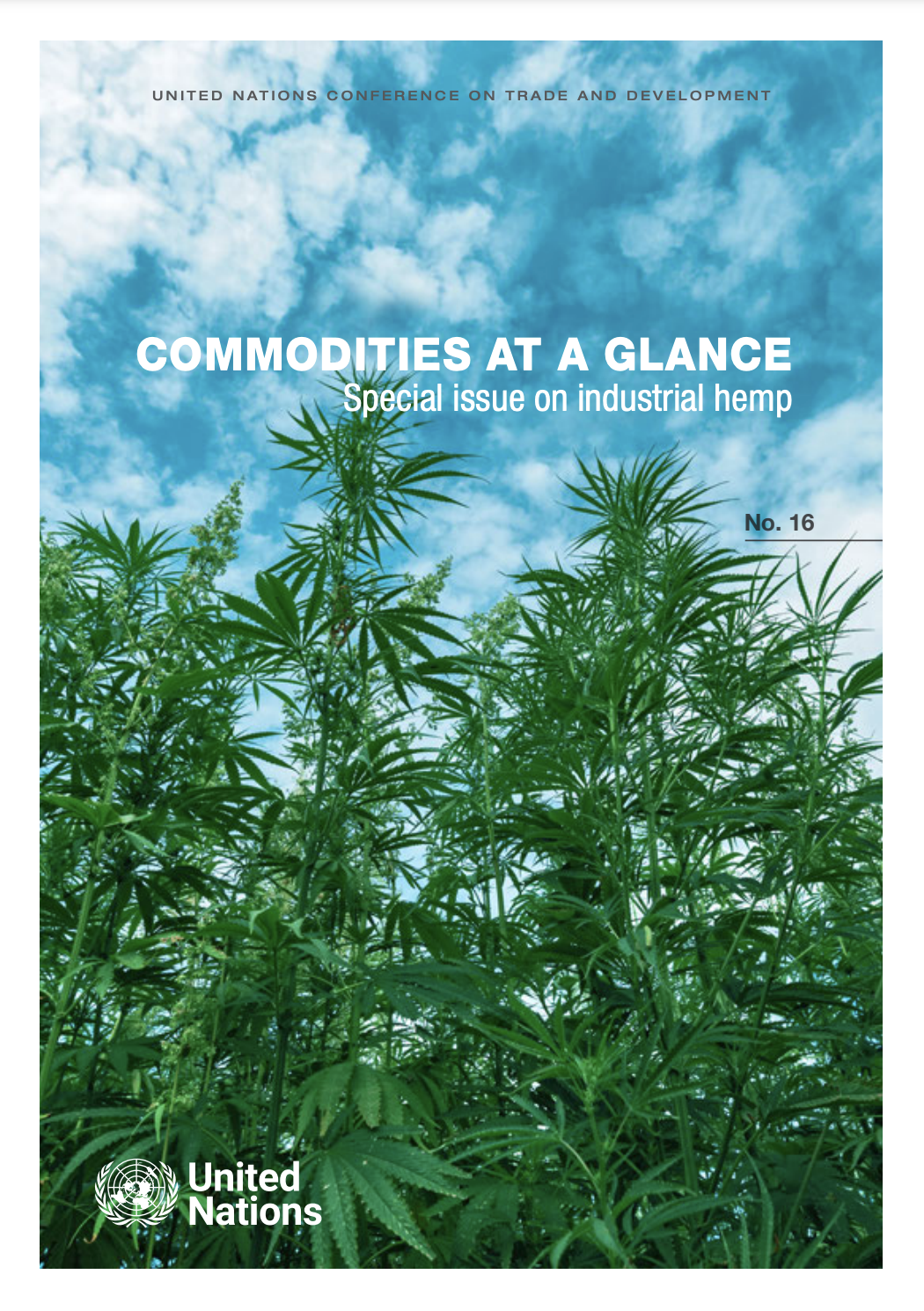The UNCTAD Report: Commodities at a Glance – Special Issue on Industrial Hemp (11/’22)
The United Nations has published a very significant and exciting new research study on industrial hemp. Compiled by a team of experts for UNCTAD, the UN Conference on Trade and Development, this timely research study should be warmly welcomed by industrial hemp growers and processors, agricultural scientists, policy researchers and proponents of sustainable development in all of the UN member states. The study is impressively broad in scope and the authors have collated essential data and insights from over one hundred referenced, peer-reviewed academic/scientific studies as well as many public, governmental and commercial sources. The extensive research and broad literature review have helped ensure this is a very useful and valuable study.
Industrial hemp is admittedly, not a simple subject. It is also an agricultural and industrial sector that has innovated and developed in many countries since the 1990s. In a sense, because of the ongoing changes in the industry and market, and in controls and regulations including climate measures, an updated overall assessment has been needed. In research terms, the study authors have done a ‘lot of heavy lifting’. The study provides a well-informed, balanced overview of the global hemp industry and renders a wealth of insight accessible to readers.

Industrial hemp is a broad yet somewhat technical, and specialised subject matter. It spans multiple scientific and professional disciplines. The report expertly addresses many issues and provides authoritative guidance. The subject matter is multi-disciplinary, technically complex and is today of urgent relevance.
This study shows industrial hemp is an underestimated primary commodity crop, a versatile bio-resource of immense utility and versatility. It also shows that the agronomic, environmental and developmental benefits and opportunities hemp presents could be ‘means and wherewithal’ for sustainable development and dramatic GHG emissions reductions. This reviewer has long believed hemp can be a key to transition, as a source of shelter, fabric, food and value-added output for rural development, towards the 2050 climate goal of net zero carbon emissions. (Industrial hemp is arguably marginalized, disadvantaged, and deemed ‘suspect’ by incorrect association with the recreational use of other Cannabis varieties.)
The UNCTAD study is titled ‘Special Issue on Industrial Hemp’ and it ‘discusses the general uses of industrial hemp, and how these are reflected in international production and trade statistics’. The study ‘also defines the steps that could be taken by developing countries where climate and agronomic characteristics are favourable to its cultivation in order to exploit its economic and social potential’. The UN study brings a welcome intergovernmental perspective and ethos and expert attention to the opportunities and challenges for industrial hemp. UNCTAD enables trade and development among all UN member states and the report is freely accessible on its website, with Creative Commons license.
Though not ostensibly its purpose, this study is a very relevant contribution to the necessary assessment of industrial hemp cultivation among appropriate policy options to address the global climate crisis. Compiled by subject experts and wide-ranging in scope, this research report is concise, fully referenced and exemplary R&D. It is suitably broad in scope and packed with a wealth of relevant facts and insights. The authors have gathered essential facts and insights from over 140 referenced, peer-reviewed sources to present an urgently needed, authoritative review of industrial hemp production and trade, and of the market opportunities for industrial hemp and the related challenges that need to be addressed.
Following a short introduction and overview, Chapter II begins by clarifying the essential definitions, taxonomy/classification and nomenclature of the Cannabis family of plants. Domestication of Cannabis L. plants has been so extensive that it has led to the quasi-disappearance of most wild species. For this reason, and others cited in the study, the ‘nomenclature of the Cannabis L. genus has imprecise foundations and has been the object of numerous taxonomic treatments’. The botanical aspects and biochemical structure are discussed in the following subsection before a description of the plant’s wide geographical distribution and ecological characteristics.
‘Industrial hemp does not have intoxicant properties’ the study points out. Nonetheless, it remains a controversial plant because it is still often mistakenly associated with recreational uses. This negative connotation remains in part because of confusion about its botanical classification and genetic phenotype.
The international hemp sector defines industrial hemp as; “a Cannabis sativa L. plant – or any part of the plant – in which the concentration of the secondary compound tetrahydrocannabinol in the tops and leaves is less than the regulated maximum level, as established by authorities having jurisdiction.” A clear(er) definition of industrial hemp is necessary, the authors explain, ‘to fully appreciate the multiplicity of its industrial, agricultural and agronomic uses’. The study explains that; ‘industrial hemp, however, does not perfectly correspond to any consensual taxonomic or phylogenetic classification, and is instead a reflection of a specific cannabinoid profile, especially in terms of THC content, and the associated legislative restrictions’. [In EU member states that maximum will rise on January 1, 2023, to 0.3% THC.]
Section 2.4 summarizes the complexities of the regulatory status of industrial hemp and cannabis; again essential reading for growers, but somewhat technical for the general reader. Current regulations, the study explains, generally derive from the three major international conventions and legislative measures dating from 1961, 1971, and 1988.
The chapter ends with a very interesting discussion on current uses, a short historical review of usage, and an excellent diagram showing the main practical/product applications and agronomic functions of industrial hemp. The agricultural benefits cited include soil regeneration (/bonification), and soil and water decontamination. Also, industrial hemp has low pesticide and herbicide needs, and is more efficient and productive per hectare than forestry in absorbing and sequestering CO2. Industrial hemp is a versatile, multi-purpose crop with myriad product applications ranging from quality natural fibre/textiles and diverse bio-materials and composites to nutrient-rich seeds, foods, cosmetics and botanical/medicinal extracts. Hempcrete, the report states ‘is of particular interest due to its high insulation properties and its simplicity of fabrication’.

Hemp also provides some of the longest, strongest and finest natural fibre. Various means are used for extracting, separating and processing the fibre. For economical production of quality fibre, the authors favour ‘controlled biological degumming of decorticated bark in bioreactors using adapted microorganisms and their enzymes’.
Chapter III explores the hemp value chain from growers to end-users and markets. The authors gather together the knowledge, perspectives and insights from recent decades of industrial hemp production, research and development. Since circa 1990 pioneering farmers/growers and ‘green’ entrepreneurs have largely driven the continuing resurgence of industrial hemp, beginning in Australia (1990), followed by European countries(‘93-) and then Canada and the US. Growers’ strategies typically aim to maximize their output and revenue from the production of either fibre, seed, or CBD/botanicals. The alternative is to grow a dual-hemp variety. ‘Dual hemp’ breeding and cultivation seeks to combine the highest stem yield with the highest seed yield. The report discusses each crop strategy option separately, and also their associated processes, in four subsections. The risk assessment framework developed by Adamovics and Zeverte-Riva (2015 ) is described and can be seen to support the case for strategic risk management and risk sharing through value-chain integration. The EU-funded Multihemp R&D program which began in 2017 is described with a schematic of its structure and biorefinery concept. The report also clearly explains and endorses the compelling case for a ‘whole-plant approach’ by governments and regulatory bodies.
Chapter IV surveys supply and demand globally with sub-sections on hemp fibre and seed supply and a detailed review of tariffs and non-tariff measures applied. It is unavoidably technical. The authors included UNCTAD experts on international trade statistics and on customs coding and classifications. The inconsistencies between different large markets are (in this reviewer’s opinion) quite startling. The study finds that despite current evidence of over $5 billion in annual hemp trade, just $42 million is recorded in international trade data. While the study found that tariffs on imports are in general modest, it reports that non-tariff measures can impose a significant obstruction, or burdens upon producers and suppliers, especially where costly laboratory tests are required.

Chapter V of the study reports on prices from FAO data globally and from several private reporting entities likeCannXchange.com. This section is also extensive and perhaps not essential reading for most ordinary readers.
UN hemp policy recommendations
The concluding Chapter VI highlights some of the key findings and presents four key policy recommendations arising from the author’s extensive and in-depth research. The recommendations will be of great interest to hemp growers, processors and traders as well as climate experts and many ecologically-aware green consumers. They are presented under four headings: Information, Regulatory Framework, Sustainability and Industrial Policy.
Information: Public data on industrial hemp remains limited. There is a need to improve availability and accessibility. International classification needs further development and Canada’s detailed production schedule may provide a benchmark in that regard.
Regulatory Framework: The distinction between intoxicant and non-intoxicant hemp cultivars is still subject to controversy. In most countries, they do not allow full exploitation of the hemp plant’s potential. Alternatively, raising the (extremely low) THC threshold in crops.
Sustainability: Hemp-related laws and regulations need to take into account hemp’s global potential to benefit agriculture, social development and the environment, including CO2 absorption (Pervais & Sain, 2003), soil improvement, and decontamination of soil and water. Vosper (2011), estimates that a ton of hemp can absorb 1.65 tons of CO2.
The study indicates that an average yield of 5.5 to 8 tons/ha can represent between 9 and 13 tons of CO2 absorption per hectare harvested. In comparison, they state ‘coniferous forests in boreal regions typically capture c.4.5t/ha during much of the first 20 years of tree growth’. They cite multiple additional hemp benefits to land, ecosystems and social economies.
Industrial policy: Hemp is a versatile, multi-purpose crop and a ‘natural candidate for establishing national and regional value chains’, which the authors suggest ‘could integrate carbon compensation schemes’. The study commends ‘the whole plant approach’ which allows the development of primary and secondary markets.
Hempcrete’s utility and potential are again highlighted in the concluding recommendations including ‘development of hemp production chains adding value to urban development plans’. Opportunities to advance social development and women,(in view of their significant role in existing informal hemp production), and potentially to formalize existing informal production are cited. The final recommendation envisages the creation of co-operatives that would group all small, informal producers to facilitate trade and value chain development.
A lot done, more to do on hemp
This study and report are a very substantive, timely and essential contribution to the available literature on industrial hemp. It deserves to be widely read and rewards close study. The authors and editors deserve great credit for producing an authoritative guide to a very relevant, wide-ranging and complex ‘field of endeavour’. In this reviewers’ humble opinion they have succeeded admirably.
The publishers UNCTAD, as a UN institution, have a unique, intergovernmental ‘global’ perspective, mandate, and ethos which informs and permeates this excellent work. At a time when corporate and national self-interest is all-pervasive, this study is a useful reminder of the important institutional capacity and capabilities of the UN in addressing global challenges and opportunities.
Member states of the EU may continue to marginalize and disregard industrial hemp for the benefit of established vested interests in agriculture, manufacturing and construction. The UNCTAD study indeed emphasizes the relevance of its findings for developing countries in particular. However, the former nation-states of the EU bloc may find that, in relation to ‘sustainable development’, they too are developing countries facing urgent developmental challenges. Ireland’s third-level, industrial and agricultural research institutions can ill afford to disregard the potential of industrial hemp to solve multiple problems.
Indigenous pioneers and investors in sustainable production and construction. Ireland urgently needs hempcrete production chains to overcome its prolonged housing crisis. As many as one million Irish residents including migrants, refugees and the homeless need affordable thermally-efficient homes ideally adjacent or accessible to towns and cities. Conventional concrete has proven too problematic (costly, ‘cold’ and pollutant) to address such current requirements.
The study provides useful insights into the dynamics of supply and demand in niche markets, such as how a surge in investment can trigger ‘boom and bust’, leading to the elimination of small vulnerable producers without secondary products and markets.

The study notes US projections for the cultivation of 930,00 acres of hemp in 2023, far in excess of the targets of the EU members. It also notes the ongoing work of the USDA, and the increasingly fierce competition from biotechnologies such as cultured cannabinoids, dys-biosynthesis and fully synthetic CBD. Such trends could have important implications for conventional and organic industrial hemp cultivation and processors. The sustainable evolution and development of the industrial hemp sector across many countries should contribute to equality, opportunity and security for the greatest number.
Learn more
Read the complete UNCTAD industrial hemp report

All about hemp
Hemp resource guide
Hemp Manifesto
Hempcrete
Hemp Carbon Credits
Humans and hemp
Image credits
UNCTAD Hemp Report cover and graphics by UNCTAD
Licensed hemp – Photo by Kindel Media on Pexels.com
Hemp CBD food supplement – Photo by Binoid CBD on Pexels.com
Latest posts
- Invest in Hemp’s Future: Tao Climate’s AI Space MRV
- 2025 is the Year of Hemp
- Hemp and the City: Our Big Hemp Pitch at the San Francisco XPRIZE Carbon Removal Capital Summit
- Hempoffset / Tao Climate Expands into USA, Joins Hemp Incubator Company Technology Accelerator
- We’re in the XPRIZE Top 100 in the World
JW Glynn
Like many proponents of hemp, I have some knowledge of certain facets of this multifaceted industry. That said, I earned an MSc. in Sustainable Development and am qualified in industrial marketing research. In the early 2000s, I worked in marketing R&D for Hemp Company Dublin, the pioneering Irish hemp supplier. In that context, I have read extensively on hemp foodstuffs, fibre and construction products and had the opportunity to meet Irish hemp pioneers including Marcus McCabe, creator of Hempire (the Irish hempcrete brand) and Steve Allin, a renowned hemp building specialist, author and publisher. I came to appreciate some of the many challenges pioneering hemp growers, processors and suppliers must address, and the all-to-evident, near-complete, disinterest of Ireland’s well-resourced agricultural, academic and research and development institutions in the incredible potential of hemp to solve multiple problems.

